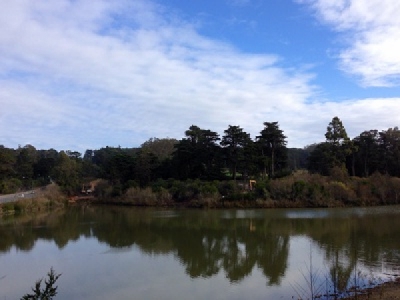
Posted on August 18, 2016
By Despo Baltoumas, The Malone Telegram
A presentation on the town’s plans to dredge Mountain View Lake drew 70 people to the Owls Head Fire Station on Monday.
Three people described by town Supervisor H. Bruce Russell as “key players” –– Chastity Miller of the Franklin County Soil and Water Conservation District; Liz Moran, president of the consulting firm working with the town on the project; and Nathan Holiday an engineer with Anchor QEA –– outlined the parameters of the anticipated $2.5 million project and answered questions posed by those in attendance.
The dredging project is necessary to address two interconnected issues that are affecting the recreational use of the lake –– sediment build-up and the spread of Eurasian water milfoil, an invasive plant species with long feathery leaves that can choke the water out of a body of water and turn it into a meadow. The species propagates very quickly and can grow from a small piece chopped from the main plant by a boat propeller.
The Mountain View Association has hired divers to pull milfoil out of the lake on a yearly basis and holds several volunteer cleaning efforts each summer to prevent the plant’s spread. But despite those efforts, dredging is necessary in order to preserve the lake for recreational purposes, Moran said.
The accumulation of sediment brought into the lake by the Little Salmon River not only affects the depth of the water, it makes it easier for the milfoil to spread, Moran said.
“It is kind of an acceleration process –– the lake gets shallower, the lake gets weedier,” Moran said. “The weeds trap more sediment, which then makes the lake shallower and the bottom muckier. So, this is a kind of an infrastructure maintenance problem right?
“If you want the lake to remain deep enough to support recreation … attractive for swimming, kayaking and all the recreational uses people like, dredging is the only long term alternative,” she said.
Moran’s company, Ecologic, was involved last year in a bathymetric study of the lake, which mapped the lake bottom and enabled the company to pinpoint priority areas for dredging. But moving forward with the dredging still faces a number of hurdles.
The town will need permits from the Adirondack Park Agency, the state Department of Environmental Conservation and the U.S. Army Corps of Engineers in order to proceed, Moran said. Fortunately for the town, “a good relationship has been forged” with those regulatory agencies that should make the permitting process go smoothly, she said.
Other factors that will affect the dredging project include the effect of the work on existing plant life –– other than the milfoil –– and how and where the sediment taken from the lake bed will be disposed of, she said.
“What is coming out of the lake and where are we going to get permission to put it?” asked Moran rhetorically.
The cost of the project will also be a major factor in how quickly the project moves forward –– if it does.
“Dredging is expensive,” Moran said.
The town has received some funding from the state for a feasibility study and has applied for a grant that would pay 75 percent of the total project cost, she noted.
“We have been successful in the past at getting grants,” Moran said. “This will provide a greatly improved lake … We are optimistic about it.”
The Mountain View Lake project is similar to one Ecologic was involved in several years ago in the Hamilton County town of Wells, in which Algonquin Lake was dredged, Moran said. Brian Towers, the Wells town supervisor, said the project has been successful in combatting a milfoil problem that had existed before the dredging, Moran said.
Residents raised several questions about the project, including its overall scope and its effects.
Burt Emory of Indian Lake asked if that lake would also be dredged, as it was not marked on the maps. Moran said that the lake, which is connected to Mountain View Lake via a channel, was included in the feasibility study, but the only area dredged will be the inlet where there is a sandbar shoal.
“That sand will be kept separate from other dredging material,” which is primarily a clay silt, Russell said. “It will be kept in separate geo tubes and used on the roads. We can salvage that and put it on the roads. … That can be one thing we can reclaim.”
Bob Malatesta, who owns property on the north shore of Indian Lake, asked about the dam, which created the lakes. He quesitoned if the analysis had looked into the integrity of the dam and if there was any review of the dam structure.
Russell pointed out that John Carr of Blue Mountain Engineering has been studying the structure, which has been plagued by leaks in recent years.
“We have some work ahead of us,” Russell said.
Source: The Malone Telegram





